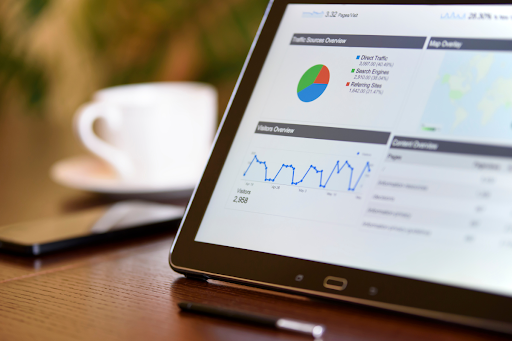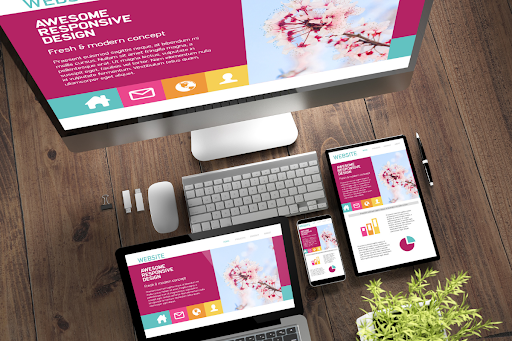How important is landing page optimisation to the success of Google Ads campaigns in Australia? As a diverse and competitive market, knowing what it takes to optimise your landing pages for better-performing Google Ad campaigns is vital to your success in Australia.
Here, landing page optimisation isn’t just a best practice—it’s a necessity for businesses seeking to maximise the return on their investment in Google Ads. By fine-tuning landing pages to align with the specific needs and expectations of Australian users, advertisers can significantly improve the performance of their campaigns.
This article delves into the strategies, techniques, and benefits of optimising landing pages, ensuring they resonate with the target audience, support business goals, and comply with the distinctive nuances of the Australian digital marketplace.
What are the Benefits of Landing Page Optimisation?
Landing page optimisation significantly enhances the user experience. A well-optimised landing page is user-friendly, visually appealing, and provides relevant and concise information, which helps in keeping the visitor engaged and reduces bounce rates. This improved user experience is crucial in making a positive first impression and can greatly influence a visitor’s decision to stay on the page and take the desired action.
Secondly, optimised landing pages lead to higher conversion rates. By aligning the content and design of the landing page with the visitors’ expectations and needs, as set by the ad they clicked on, businesses can effectively guide visitors towards making a purchase, signing up for a newsletter, or completing any other targeted action. A clear and compelling call-to-action (CTA), along with trust signals such as testimonials or guarantees, further incentivise users to convert.
Furthermore, landing page optimisation is vital for the effectiveness of paid advertising campaigns. Google Ads, for instance, evaluates the relevance and quality of landing pages when determining the Quality Score of an ad. A higher Quality Score can lead to lower cost-per-click (CPC) and better ad placement, making your advertising efforts more cost-effective.
Optimised landing pages also provide valuable insights through data analytics. By analysing how visitors interact with the page, businesses can gather crucial information about user behaviour and preferences. This data can be used to further refine marketing strategies, not just on the landing page but across all digital marketing efforts.
Lastly, in the context of SEO, optimised landing pages can enhance your website’s overall search engine performance. By incorporating relevant keywords, ensuring fast load times, and providing high-quality content, landing pages can rank higher in search results, attracting organic traffic in addition to traffic from paid ads.

How Can We Improve the Landing Page Experience Metric in Google Ads Campaigns?
Improving the landing page experience metric in Google Ads campaigns is essential for both the success of your ads and the satisfaction of your visitors. Here’s how to do it, step-by-step:
Ensure Relevance to Ad Content
The content of your landing page should align closely with the messaging and promises made in your ad. If your ad speaks about a specific product, offer, or service, your landing page must deliver on that promise without deviation. Use the same keywords in your landing page content that you use in your ads. This consistency helps in maintaining relevance and can improve your Quality Score in Google Ads.
Optimise Page Load Speed
A slow-loading landing page can lead to high bounce rates. Optimise images, minimise the use of heavy scripts, and leverage caching to improve loading times. Don’t forget, with a significant portion of web traffic coming from mobile devices, ensure your landing page is also optimised for mobile, offering a seamless experience on all devices.
Enhance User Experience
Make sure your landing page is easy to navigate with a clear structure. Users should find what they are looking for without confusion or frustration. Use an attractive and professional design that resonates with your target audience. Incorporate visual elements that support, rather than distract from, your message.
Use Compelling and Clear Call-to-Actions (CTAs)
Your landing page should have a clear and compelling call-to-action that guides users on what to do next. Whether it’s making a purchase, signing up for a newsletter, or filling out a contact form, the CTA should stand out and be easy to find. Test different placements for your CTA to determine which position yields the highest conversion rates.
Build Trust and Credibility
Include elements like customer testimonials, certifications, awards, and security badges to build trust with your audience. Be transparent about your products, services, and pricing. Providing comprehensive and honest information can significantly enhance trust.
Optimise for Conversion
Remove or minimise elements that could distract users from the main message or action, like unnecessary links or excessive information. Use design elements to subtly guide users towards the conversion goal, such as strategic colour contrasts for the CTA button.
Utilise Analytics and Feedback
Leverage analytics and use tools like Google Analytics to track user behaviour on your landing page. Analyse metrics like time on page, bounce rate, and conversion rate to identify areas for improvement. Consider obtaining direct feedback from users through surveys or user testing to gain insights into their experience and expectations.
Why Does Every Google Ads Campaign Need Its Own Landing Page?
Having a dedicated landing page for each Google Ads campaign is essential for maximising the effectiveness of online marketing efforts. Each campaign typically targets a specific audience segment or promotes a particular product or service, and a unique landing page allows for the tailoring of content, design, and call-to-actions (CTAs) to that audience.
This ensures a more relevant and engaging user experience and maintains consistency between the ad content and the landing page, reinforcing user expectations and providing a cohesive journey.
The focused content on a campaign-specific landing page greatly enhances conversion rates. By concentrating on a single objective and featuring clear, compelling CTAs, these pages are better equipped to convert visitors, devoid of the distractions present on a general website.
Additionally, separate landing pages facilitate improved tracking and optimisation opportunities. They allow for more accurate analytics on user behaviour and campaign performance, making it easier to conduct effective A/B testing on various elements like headlines and page layouts.
An important aspect of using individual landing pages is their impact on Google Ads Quality Scores. Google evaluates the relevance of the landing page to the ad content and keywords. A highly relevant, campaign-specific page can positively influence this score, improving ad placement and potentially lowering cost-per-click. Moreover, Google considers the user experience on the landing page, so a well-optimised, specific page can lead to a better overall experience.
Lastly, having different landing pages for various campaigns allows for more effective market segmentation and personalisation. This approach lets advertisers customise the content to address the unique needs and interests of different market segments, enhancing the impact of personalised content on engagement and conversions.
What Affects Landing Page Experience in Google Ads?
Several factors affect the landing page experience in Google Ads, each playing a critical role in determining the effectiveness and success of the ad campaign.
Make it Relevant to the Audience
First and foremost, relevance is key. The content on the landing page must directly relate to the ad’s promise and the keywords targeted.
If users click on an ad expecting certain information or offers and the landing page does not align with these expectations, the experience will be negatively impacted. Another crucial factor is the page’s design and usability.
Well-Designed and Easy to Navigate
A well-designed landing page that is easy to navigate, visually appealing, and mobile-friendly significantly enhances user experience. This includes fast load times, as slow-loading pages are a major deterrent for users and can lead to high bounce rates.
High Quality Content
The quality of content on the landing page is also essential. It should be clear, engaging, and valuable to the visitor, providing the information they are looking for without overwhelming them with irrelevant details.
A Strong, Clear CTA
A strong, clear call-to-action (CTA) is necessary to guide users on what to do next, whether it’s making a purchase, signing up for a newsletter, or filling out a contact form. Trust signals such as customer testimonials, security badges, and transparent policies further improve the landing page experience by building confidence in the user.
Emphasis on the User Experience
Google Ads also considers the landing page’s performance metrics, such as click-through rates, bounce rates, and conversion rates, to evaluate user experience. High bounce rates and low conversion rates can indicate a poor landing page experience, potentially affecting the ad’s Quality Score and overall campaign performance.

How Can Landing Pages Help Service-Based Businesses?
Landing pages are a natural extension for product-based businesses, but what about those in the service business? Landing pages are incredibly valuable tools for service-based businesses, offering numerous advantages that can significantly enhance their marketing efforts and customer engagement.
This focused approach is highly effective in capturing the attention of potential customers who are specifically interested in that service. By providing detailed information, answering common questions, and showcasing the unique benefits of the service, businesses can effectively communicate the value proposition to their target audience.
Another key benefit is the ability to generate leads. Landing pages designed for service-based businesses often include forms for scheduling consultations, requesting more information, or signing up for newsletters.
These forms are crucial for capturing visitor information, such as names, email addresses, and phone numbers, which can then be used for follow-up, lead nurturing, and conversion into paying customers. By providing a clear and compelling call-to-action (CTA), such as “Book a Free Consultation” or “Get a Quote,” landing pages can encourage visitors to take the next step in the customer journey.
Plus, with integrated analytics tools, businesses can gather data on visitor behaviour, such as how long they stay on the page, which sections they interact with, and what actions they take. This data provides insights into what is working well and what needs improvement, allowing businesses to continuously optimise their landing pages for better performance.
Your Next Steps for Landing Page Conversion Rate Optimisation
Now that you better understand how to create a Google Ads landing page, as well as the important points to focus on for proper landing page optimisation, what should you do next? Keep in mind that you’ll want to write compelling headlines for your ads and infuse them with emotional appeal to attract attention. Ad copy length matters as well. Juggling all of these important points while trying to maximise your Adwords landing page can be a challenge, but you don’t have to do it all yourself!
Reach out to the Australian Google Ads campaign experts at CLIQ MC and book your no obligation sales consultation with one of our professional SEO and ad management specialists today. We’ve helped brands large and small across Australia to achieve impressive ROI, brand recognition and sales with our custom-tailored approach. Book your call today to learn more!



